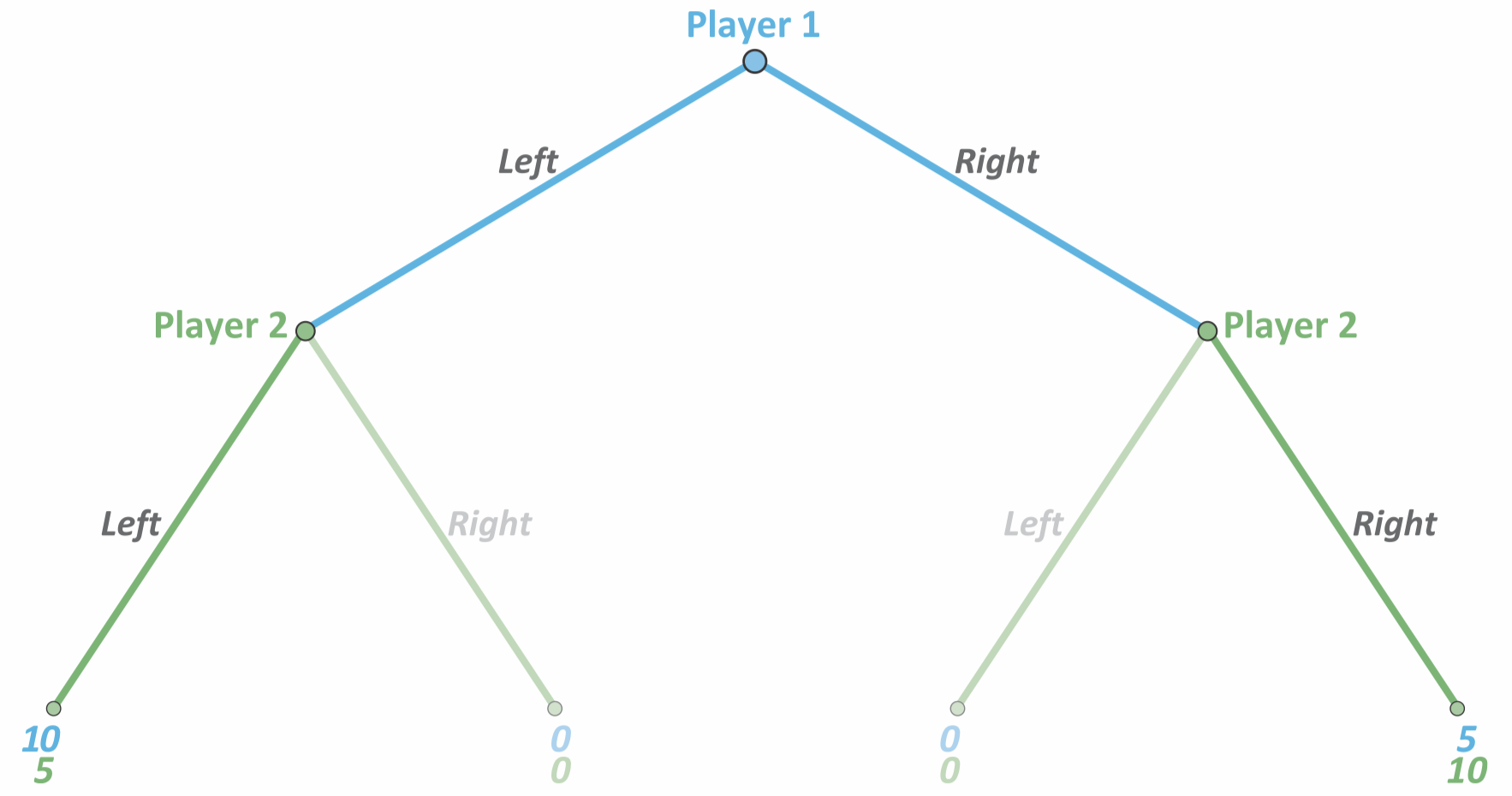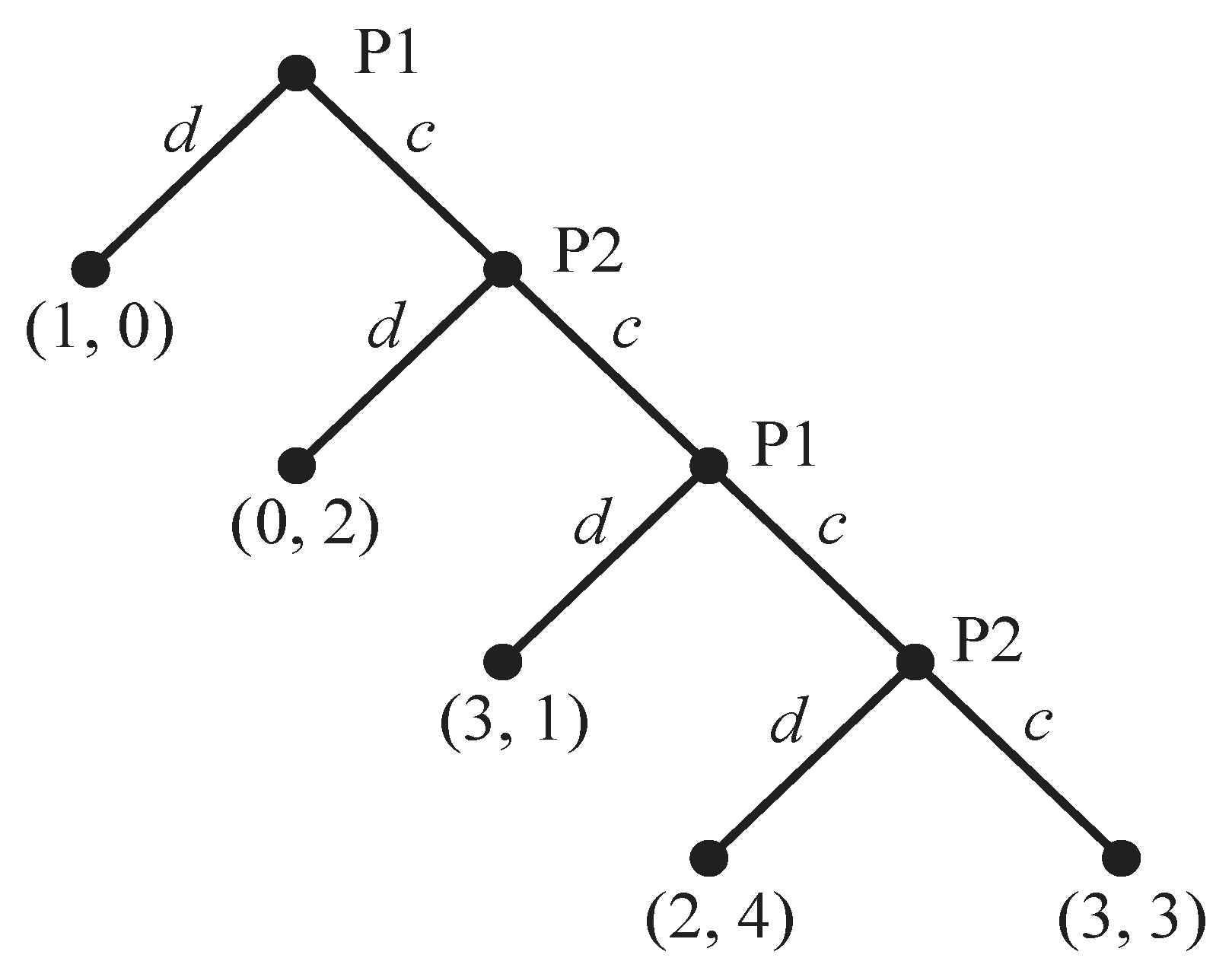def. Nash Equilibrium is a set of strategies (one for each player) which is the best response strategy of each other’s move; i.e. you can’t deviate without destabilizing the equilibrium
alg. Finding the Nash Equilibrium in a payoff matrix. Corner Method to find NE in payoff matrix. 1. For each player: 2. For each other player’s move; highlight the line of the best response → When both the left and top lines are highlighted that is NE.
Pure Strategy Nash Equilibirum
def. PSNE. is PSNE for two players iff:
How to Find NE
- In Simultaenous Games: Use the Corner method
- In Sequential Games: Make the Decision Tree into a Payoff Matrix, and use the Corner method:
e.g. Driving left or Right


Subgame Perfect Nash Equilibrium (SPNE)
def. A Non-credible threat is when the follower in a sequential move game says: “If I can’t win, I’ll take you down no matter how much it costs to me.”
- In the above game, is an example of a non-credible threat because when Player 1 chooses L, Player 2’s best response is L—but Player 2 threatens to go R. This is because they want the best possible outcome for them,
def. Subgame Perfect Nash Equilibria (SPNE) are NE where the follwer will only choose strategies that are best for them, and can’t threaten the leader beforehand with non-credible threats.
To find the SPNE of a game, use Backwards Induction:
- Determine the last player’s best strategy
- The second-last player knows what the last player will do. Then determine what the second-last player will do.
- Continue solving until the first player.

, payoff is (1,0) which is a lot worse off that global optimal.